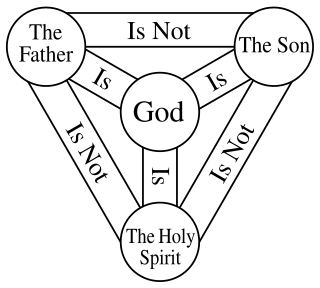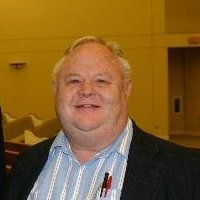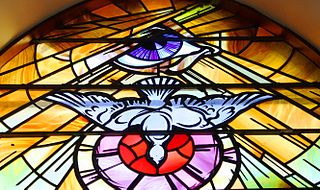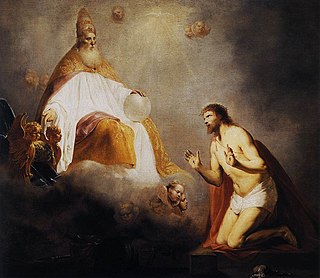
Frederick Phillips "Fred" Brooks Jr. is an American computer architect, software engineer, and computer scientist, best known for managing the development of IBM's System/360 family of computers and the OS/360 software support package, then later writing candidly about the process in his seminal book The Mythical Man-Month.

The Christian doctrine of the Trinity defines God as being one god existing in three coequal, coeternal, consubstantial divine persons: God the Father, God the Son and God the Holy Spirit, three distinct persons sharing one homoousion (essence). In this context, the three persons define who God is, while the one essence defines what God is.
The hacker culture is a subculture of individuals who enjoy - often in collective effort - the intellectual challenge of creatively overcoming the limitations of software systems or electronic hardware, to achieve novel and clever outcomes. The act of engaging in activities in a spirit of playfulness and exploration is termed hacking. However, the defining characteristic of a hacker is not the activities performed themselves, but how it is done and whether it is exciting and meaningful. Activities of playful cleverness can be said to have "hack value" and therefore the term "hacks" came about, with early examples including pranks at MIT done by students to demonstrate their technical aptitude and cleverness. The hacker culture originally emerged in academia in the 1960s around the Massachusetts Institute of Technology (MIT)'s Tech Model Railroad Club (TMRC) and MIT Artificial Intelligence Laboratory. Hacking originally involved entering restricted areas in a clever way without causing any major damage. Some famous hacks at the Massachusetts Institute of Technology were placing of a campus police cruiser on the roof of the Great Dome and converting the Great Dome into R2-D2.
The doctrine or theory of immanence holds that the divine encompasses or is manifested in the material world. It is held by some philosophical and metaphysical theories of divine presence. Immanence is usually applied in monotheistic, pantheistic, pandeistic, or panentheistic faiths to suggest that the spiritual world permeates the mundane. It is often contrasted with theories of transcendence, in which the divine is seen to be outside the material world.

Nontrinitarianism is a form of Christianity that rejects the mainstream Christian doctrine of the Trinity—the belief that God is three distinct hypostases or persons who are coeternal, coequal, and indivisibly united in one being, or essence. Certain religious groups that emerged during the Protestant Reformation have historically been known as antitrinitarian.
David Cope is an American author, composer, scientist, and former professor of music at the University of California, Santa Cruz (UCSC). His primary area of research involves artificial intelligence and music; he writes programs and algorithms that can analyse existing music and create new compositions in the style of the original input music. He taught a summer workshop in algorithmic computer music that was open to the public as well as a general education course entitled Artificial Intelligence and Music for enrolled UCSC students. Cope is also co-founder and CTO Emeritus of Recombinant Inc., a music technology company.

In the arts, bricolage is the construction or creation of a work from a diverse range of things that happen to be available, or a work constructed using mixed media.

John M. Frame is a retired American Christian philosopher and Calvinist theologian especially noted for his work in epistemology and presuppositional apologetics, systematic theology, and ethics. He is one of the foremost interpreters and critics of the thought of Cornelius Van Til.
Colin Ewart Gunton was an English Reformed systematic theologian. He made contributions to the doctrine of creation and the doctrine of the Trinity. He was Professor of Christian Doctrine at King's College, London, from 1984 and co-founder with Christoph Schwoebel of the Research Institute for Systematic Theology in 1988. Gunton was actively involved in the United Reformed Church in the United Kingdom where he had been a minister since 1972.

The attributes of God are specific characteristics of God discussed in Christian theology. Christians are not monolithic in their understanding of God's attributes.

The New Church is any of several historically related Christian denominations that developed as a new religious group, influenced by the writings of scientist and mystic Emanuel Swedenborg (1688–1772).

God in Christianity is believed to be the eternal, supreme being who created and preserves all things. Christians believe in a monotheistic conception of God, which is both transcendent and immanent. Christian teachings on the transcendence, immanence, and involvement of God in the world and his love for humanity exclude the belief that God is of the same substance as the created universe but accept that God's divine nature was hypostatically united to human nature in the person of Jesus Christ, in a unique event known as "the Incarnation".

Whether the earliest Church Fathers believed in the Trinity is a subject for debate. Some of the evidence used to support an early belief in the Trinity are triadic statements from the New Testament and the Church Fathers. The view that the Son was 'of the substance of the Father, God of God...very God of very God' was formally ratified at the First Council of Nicaea in 325 AD. The Holy Spirit was included at the First Council of Constantinople, where the relationship between the Father, Son and Holy Spirit as one substance (ousia) and three co-equal persons (hypostaseis) was formally ratified.

Computational creativity is a multidisciplinary endeavour that is located at the intersection of the fields of artificial intelligence, cognitive psychology, philosophy, and the arts.

De Doctrina Christiana is a theological treatise of the English poet and thinker John Milton (1608–1674), containing a systematic exposition of his religious views. The Latin manuscript "De Doctrina" was found in 1823 and published in 1825. The authorship of the work is debatable. In favor of the theory of the non-authenticity of the text, comments are made both over its content, as well as since it is hard to imagine that such a complex text could be written by a blind person However, after nearly a century of interdisciplinary research, it is generally accepted that the manuscript belongs to Milton. The course of work on the manuscript, its fate after the death of the author, and the reasons for which it was not published during his lifetime are well established. The most common nowadays point of view on De Doctrina Christiana is to consider it as a theological commentary on poems.

Dorothy Leigh Sayers was an English crime writer and poet. She was also a student of classical and modern languages.

Mormonism and Nicene Christianity have a complex theological, historical, and sociological relationship. Mormons express their doctrines using standard biblical terminology and have similar views about the nature of Jesus Christ's atonement, bodily resurrection, and Second Coming as traditional Christianity. Nevertheless, most Mormons do not accept the Trinitarian doctrine of Nicene Christianity, codified in the Nicene and Nicene-Constantinopolitan Creeds of 325 and 381. Although Mormons consider the Protestant Bible as scripture, they do not believe in biblical inerrancy. They have also adopted additional scriptures that they believe to have been divinely revealed to Joseph Smith, including the Book of Mormon, the Doctrine and Covenants, and the Pearl of Great Price. Mormons practice baptism and celebrate the sacrament, but they also participate in other religious rituals. Mormons self-identify as Christians.

The classical education movement designates a traditional and historic liberal arts education that seeks to restore a robust study of the liberal arts and includes study of the natural sciences, Western literature, the "great books", Western history, and the fine arts. While schools in the movement vary in their use of these categories, the general goal of the classical education movement is to bring this group of studies to contemporary private and public schools as well as to thousands of homeschooling communities.

Christian theology is the theology of Christian belief and practice. Such study concentrates primarily upon the texts of the Old Testament and of the New Testament, as well as on Christian tradition. Christian theologians use biblical exegesis, rational analysis and argument. Theologians may undertake the study of Christian theology for a variety of reasons, such as in order to:

Design tools are objects, media, or computer programs, which can be used to design. They may influence the process of production, expression and perception of design ideas and therefore need to be applied skillfully.














